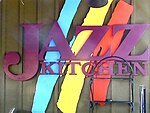Joseph J. Bingham Indianapolis Public School No. 84
1928 establishments in IndianaElementary schools in IndianaMarion County, Indiana Registered Historic Place stubsMission Revival architecture in IndianaNational Register of Historic Places in Indianapolis ... and 3 more
School buildings completed in 1928School buildings on the National Register of Historic Places in IndianaSchools in Indianapolis

Joseph J. Bingham Indianapolis Public School No. 84 is a historic elementary school building located at Indianapolis, Marion County, Indiana. It was built in 1927–1928, and is a two-story, Mission Revival style building on a raised basement. It is of reinforced concrete construction sheathed in red brick with limestone detailing. It has a green clay barrel tile, side gabled roof. A wing was added in 1955.: 5 It was added to the National Register of Historic Places in 2004.
Excerpt from the Wikipedia article Joseph J. Bingham Indianapolis Public School No. 84 (License: CC BY-SA 3.0, Authors, Images).Joseph J. Bingham Indianapolis Public School No. 84
North New Jersey Street, Indianapolis Meridian Kessler
Geographical coordinates (GPS) Address Nearby Places Show on map
Geographical coordinates (GPS)
| Latitude | Longitude |
|---|---|
| N 39.859444444444 ° | E -86.151388888889 ° |
Address
North New Jersey Street 5786
46220 Indianapolis, Meridian Kessler
Indiana, United States
Open on Google Maps








